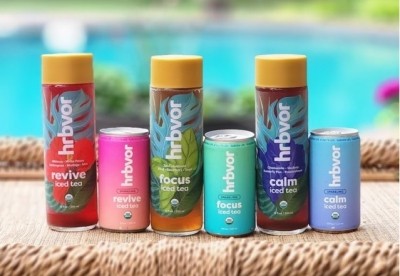The latest US craft beer market figures: ‘In this maturing & competitive market, collective growth for the category is hard to come by’

That is against a backdrop of a 3% shrink in the overall beer market by volume.
With craft beer naturally attracting a premium, the category performed well in value terms. Retail dollar value for the category in 2022 is estimated at $28.46bn, representing a 24.6% market share and 6% growth over 2021.
Sales growth was also driven by a share shift to smaller brewers—who are more likely to sell onsite and via distributed draught —as well as the continued channel shift back to on-premise, which has a higher average retail value.
But while the category appears to have found its feet again after the pandemic (most of the rebound having taken place in 2021), it now finds itself facing a new set of hurdles.
“2022 presented small brewers with a number of challenges, including rising operating and material costs and increasing competition, particularly in distribution,” said Bart Watson, chief economist, Brewers Association. “In this maturing and competitive market, collective growth for the category is hard to come by.”
Number of breweries reaches all-time high
US craft brewer definition
Small: Annual production of 6 million barrels of beer or less (approximately 3% of US annual sales). Production is attributed to the rules of alternating proprietorships.
Independent: Less than 25% of the brewery is owned or controlled (or equivalent economic interest) by an alcoholic beverage industry member that is not itself a craft brewer.
Brewer: Has a TTB Brewer’s Notice and makes beer.
Craft brewers (defined by the Brewers Association as small and independent brewing companies - see right) provided 189,413 direct jobs, representing a 9% increase from 2021, as the shift back towards hospitality-focused business models after the pandemic continued.
This was also driven by the growth in the number of craft breweries: which reached an all-time high of 9,552. That can be broken down into 2,035 microbreweries, 3,418 brewpubs, 3,838 taproom breweries, and 261 regional craft breweries.
The total US operating brewery count was 9,709, up from 9,384 in 2021.
Throughout the year, there were 549 new brewery openings and 319 closings.
The Brewers Association's data also includes its list of the top 50 US craft brewers, as follows:
It has also compiled a list of the top overall 50 brewers.
These are led by Anheuser-Busch (which includes the brands 10 Barrel, Bass, Beck’s, Blue Point, Bud Light, Budweiser, Breckenridge, Busch, Craft Brew Alliance, Devils Backbone, Elysian, Four Peaks, Golden Road, Goose Island, Karbach, King Cobra, Landshark, Michelob, Natural, Platform, Rolling Rock, Shock Top, Veza Sur, Wicked Weed, and Ziegenbock brands, as well as other brand families and imported brands).
Anheuser-Busch is followed by MolsonCoors (which includes A.C. Golden, Atwater, Batch 19, Blue Moon, Colorado Native, Coors, Hamms, Hop Valley, Icehouse, Keystone, Killian’s, Leinenkugel’s, Mickey’s, Milwaukee’s Best, Miller, Olde English, Revolver, Steel Reserve, Tenth & Blake, and Terrapin brands, as well as other brand families and imported brands).
In third place is Constellation Brewing Co (which includes domestic brands Four Corners, Funky Buddha, and Tocayo Brands; it also includes imported brands Corona, Modelo, Pacifico, and Victoria).
Out of the top 50 overall brewers, 40 were craft brewers: with the largest craft brewer D. J Yuengling & Son taking the ranking of no. 7.











